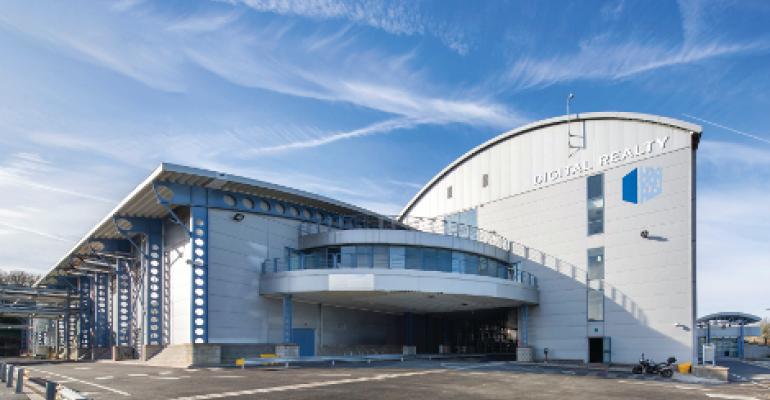About 100 data centers have been approved to be exempt almost entirely from paying an extra tax on energy use under one of the government’s climate change initiatives in exchange for commitments from the operators to increase energy efficiency of the facilities.
Among the operators are major players, such as Digital Realty, CenturyLink Technology Solutions, Equinix, TelecityGroup, and IBM, among others.
Called Climate Change Agreement, the exemption is for energy intensive industries, created by the government to help them remain competitive with foreign players after the levy was introduced. It slashes the levy on companies in these industries by 90 percent if they commit to making measurable energy efficiency improvements.
The levy was introduced in 2010, and the CCAs have been around since 2001, but data centers were not among the 50 or so industries that were considered energy intensive and that would qualify for CCAs.
In July of last year, thanks to years of lobbying efforts by data center providers and trade groups (most notably techUK), the data center industry finally made the list, and the new Climate Change Agreement for Data Centers went into effect.
“The industry has lobbied the government since 2010 to prove that U.K. data centers are good for the U.K. economy,” Mark Yearwood, director of financial planning and analysis for CenturyLink EMEA, said in an emailed statement. “We are an energy intensive industry, hence energy efficiency in this sector is paramount to overall scheme objectives.”
To get the tax break, an operator has to agree to improve energy efficiency of each of their CCA-covered sites by 30 percent over a 2011 baseline by 2020. Efficiency, under the scheme, will be expressed using Power Usage Effectiveness – the widely used data center energy efficiency metric. (See full list of data centers covered by CCA as of January 5, 2015 here)
CCA Won’t Mean Big Changes for Digital Realty in UK
Digital Realty Limited, U.K. subsidiary of the San Francisco-based wholesale data center giant Digital Realty Trust, has seven data centers covered by the CCA, but most efficiency improvements that will get it to the target will not be something the company would not have done had it not chosen to participate in the scheme.
“I don’t think it’ll be a huge departure from business-as-usual,” Paul Cranfield, director of power for Digital Realty in EMEA, said. “Combination of [new] investments and housekeeping will get us across the line.”
The company has grown a lot via acquisition, and many of the facilities in its portfolio have infrastructure that is simply outdated and needs to be upgraded regardless of the CCA. Cranfield also expects PUE improvements to come from customers upgrading IT gear to newer, higher-density boxes.
Expressed simply, PUE is a ratio between power consumed by IT and total power consumed by the data center, including all the mechanical and electrical infrastructure and energy losses that occur in transmission and conversion. PUE improves if IT consumes more power, while total power remains constant.
Improvements to bring “legacy” facilities up to today’s standards will be quite ordinary. Things like replacing old inefficient chillers with modern systems that use free air cooling; coupling live cooling capacity more tightly with IT load; increasing ambient air temperature; widening humidity bands; implementing hot- or cold-aisle containment, Patrick Coogan, investment and acquisitions associate at Digital Realty, said.
CenturyLink to Make Upgrades Throughout
The efforts at CenturyLink, which has three data centers covered by the CCA, are along similar lines. “A key part of our innovation plan will involve replacement, upgrade or alteration to our existing mechanical and electrical infrastructure,” Mark Taylor, director of data center operations at CenturyLink EMEA, said in an email.
The company is planning to replace chiller-plant equipment, upgrade electrical infrastructure, CRAHs (computer room air handlers), improve airflow management and controls. CenturyLink will also switch to LED lighting, among other improvements.
“The key is also investing in staff training which provides enhanced knowledge supporting strict procedure and policy enhanced management,” Taylor said.
Savings Passed On to Customers
The point of all this work is, of course, substantial savings. On top of savings that result from more efficient equipment, companies participating in the scheme expect to save a lot by not paying most of the climate change levy.
“The significant savings to CenturyLink will allow us firstly to re-invest in the infrastructure that will deliver the targets of the scheme whilst remaining internationally competitive with our utility costs, as well as removing CRC pass through tax charges to our clients, which has often not been well received,” CenturyLink’s Yearwood said.
Cranfield also said Digital Realty’s savings from the levy exemption will be significant. “That saving, in reality, is passed straight to our customers,” he said.
Correction: A previous photo that accompanied this article featured a London data center Digital Realty used to own, but no longer owns. The image has been replaced with one of a Chessington facility the company currently owns.





